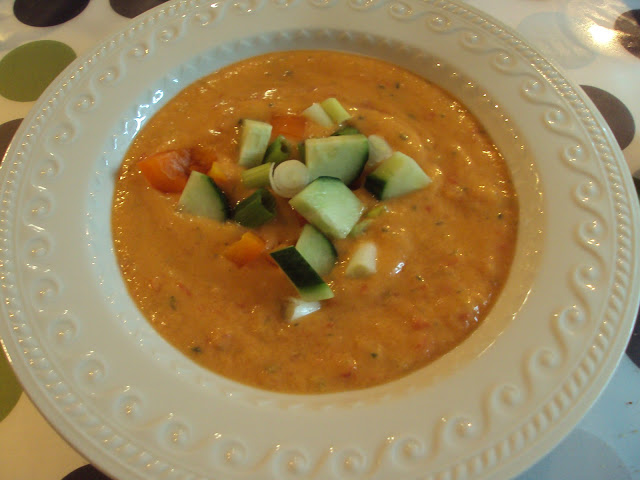
This is the first sourdough bread I've made, and with how perfectly it came out I'm tempted to only make sourdough bread from now on! The crust was thick and crunchy--perfectly complementary to the light and fluffy inside. It had the characteristic sourdough flavor, which will continue to develop as I grow my starter over time, and the chive and cheddar were a wonderful combination in the bread. I also believe the potato added to the lightness and flavor to this bread, and I am curious to try other more traditional sourdough breads to compare.
The bread itself only took 1 day to make, but it took me 5 days to prepare the starter. Four days to prep the seed culture, and 1 day to make the barm, or sourdough starter, which uses seed starter. Once you make the barm, it is refrigerated overnight, then used the next morning in this recipe. Here is a link to a recipe for
a simple sourdough starter, since Peter Reinhart's is fairly descriptive and a lot to include here.
Ingredients:
4 c unbleached bread flour
2 small potatoes (~8oz), finely chopped, boiled in 3 c water
1/2 to 1 c potato water, from above
1 1/2 c barm
2 t yeast
2 t salt
6 thin slices sharp cheddar cheese (4 oz)
1/4 c finely chopped chives
Semolina or cornmeal for dusting
Remove the barm from the fridge 1 hr before you are ready to start. At the same time, boil the potatoes in water, and let sit until warm.
In a large bowl mix the barm with 2 c flour, 1/2 c water, the potatoes, and yeast, and let sit 30 minutes.
Add the rest of the flour, salt, and add water as needed as you mix the dough until it forms a ball. Knead for ~6 minutes until everything is evenly distributed. Add the chives and continue kneading for 2 minutes until mixed thoroughly. I kneaded mine an extra 2 minutes until I was satisfied with the texture.
Coat in oil and let rest in a bowl covered in plastic wrap for 90 minutes, until doubled.
After the dough has risen, dump out onto a floured surface and cut into 2 halves. Flatten into 6''x8'' rectangles and lay 3 cheese slices on each, leaving a 1'' border around. Roll up the dough, keeping surface tension as you roll, and gently pinching the ends closed, making sure the push trapped air out when you pinch.
Place the loaves onto a baking sheet lined with parchment paper, dusted with cornmeal or semolina flour. Spray with oil and cover in plastic wrap. Let rise ~1 hr.
When the loaves are almost done rising, prep the oven for hearth baking: 500 F, with steam pan and baking stone on a rack below. Score the loaves diagonally, cutting through to a layer of cheese.
When the oven is preheated, place the bread in the oven on the stone or on the pan, and you can leave it on the parchment paper if you choose. This will protect the bottoms from burning, I have found.
Fill the steam pan with 1 c boiled water and close the door. Open after 30 s and mist the oven. Repeat misting 2 more times, then lower the oven to 450 F and set the timer for 35 minutes. Rotate halfway through for even baking.
Mine took exactly 35 minutes, and at first glance I thought they had cooked too much and were slightly burned, but they actually tasted perfect and I now suspect that I have been taking my bread out a bit too soon. I will experiment with longer baking times.
Let the loaves cool 45 minutes before serving, and enjoy--I'm sure you will with this one!
 |
| Mixed ingredients sitting for 1 hr |
 |
| Finished kneading |
 |
| After rising |
 |
| Before rolling |
 |
| Before baking |
 |
| Out of the oven |












